Prescribed sources - greek theatre
4.5(2)
4.5(2)
Card Sorting
1/40
Earn XP
Description and Tags
Study Analytics
Name | Mastery | Learn | Test | Matching | Spaced |
|---|
No study sessions yet.
41 Terms
1
New cards
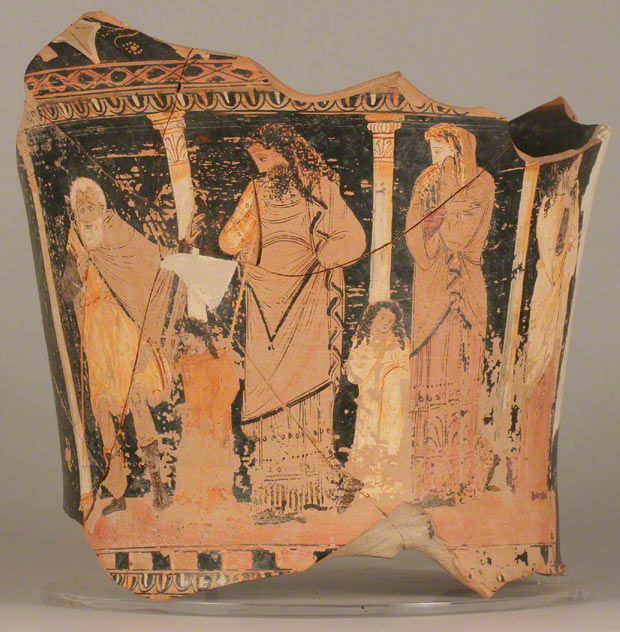
What is the date of this pot?
330 BC
2
New cards
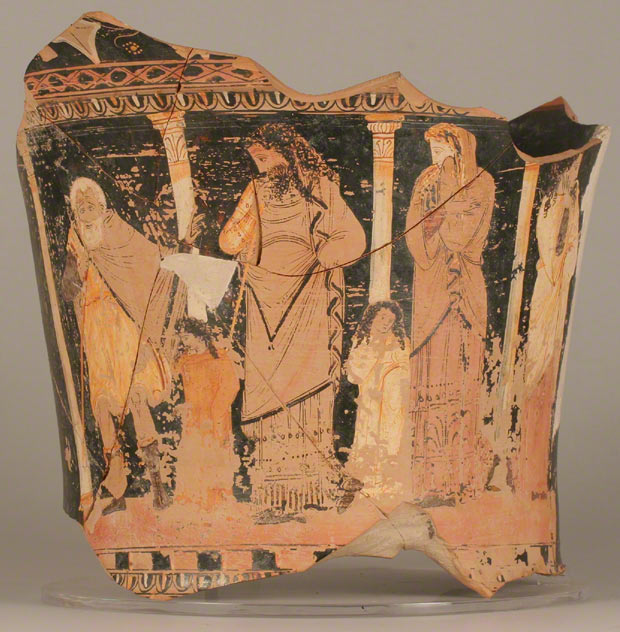
Who does this pot depict?
Messenger from Corinth, Oedipus, Jocasta, Antigone, Ismene
3
New cards

How useful is this pot in showing how Oedipus may have been staged?
Useful:
* Masks
* Messenger addressing audience - actor
* Columns = skene
* Jocasta’s actor shows shock - emotions by actors
* Costumes - Oedipus + Jocasta have rich clothing - messenger’s costume is more shabby
Not useful:
* Shows children - no mention of them in the play - artistic interpretation?
* Pot dated a long time after original production
* Masks
* Messenger addressing audience - actor
* Columns = skene
* Jocasta’s actor shows shock - emotions by actors
* Costumes - Oedipus + Jocasta have rich clothing - messenger’s costume is more shabby
Not useful:
* Shows children - no mention of them in the play - artistic interpretation?
* Pot dated a long time after original production
4
New cards
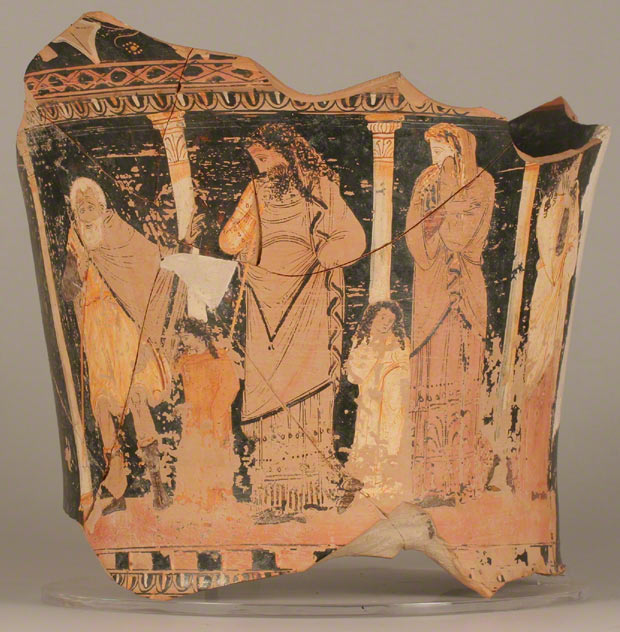
Where was this fragment of the pot found?
Sicily
5
New cards
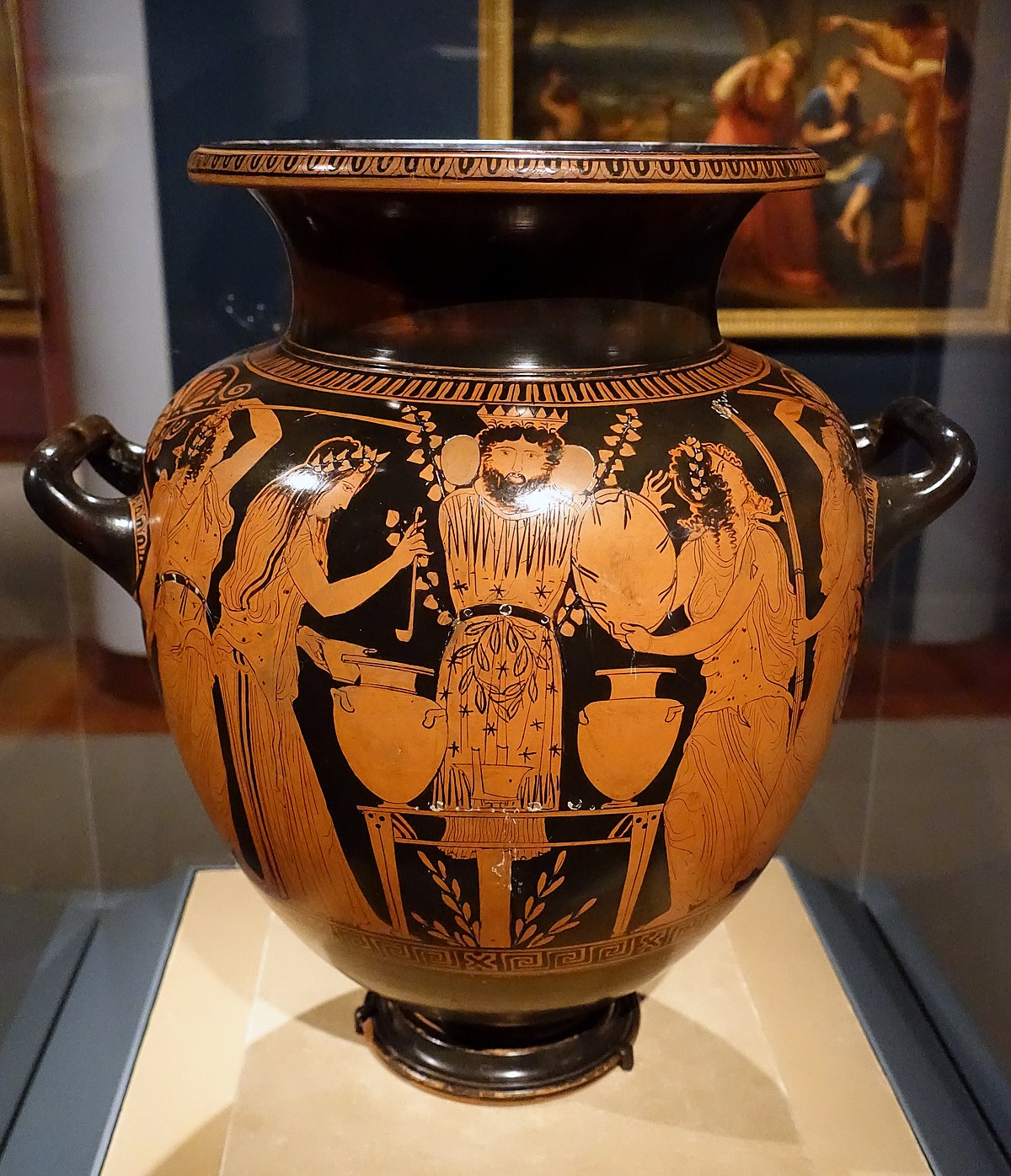
What is the date of this pot?
late 5th century BCE
6
New cards
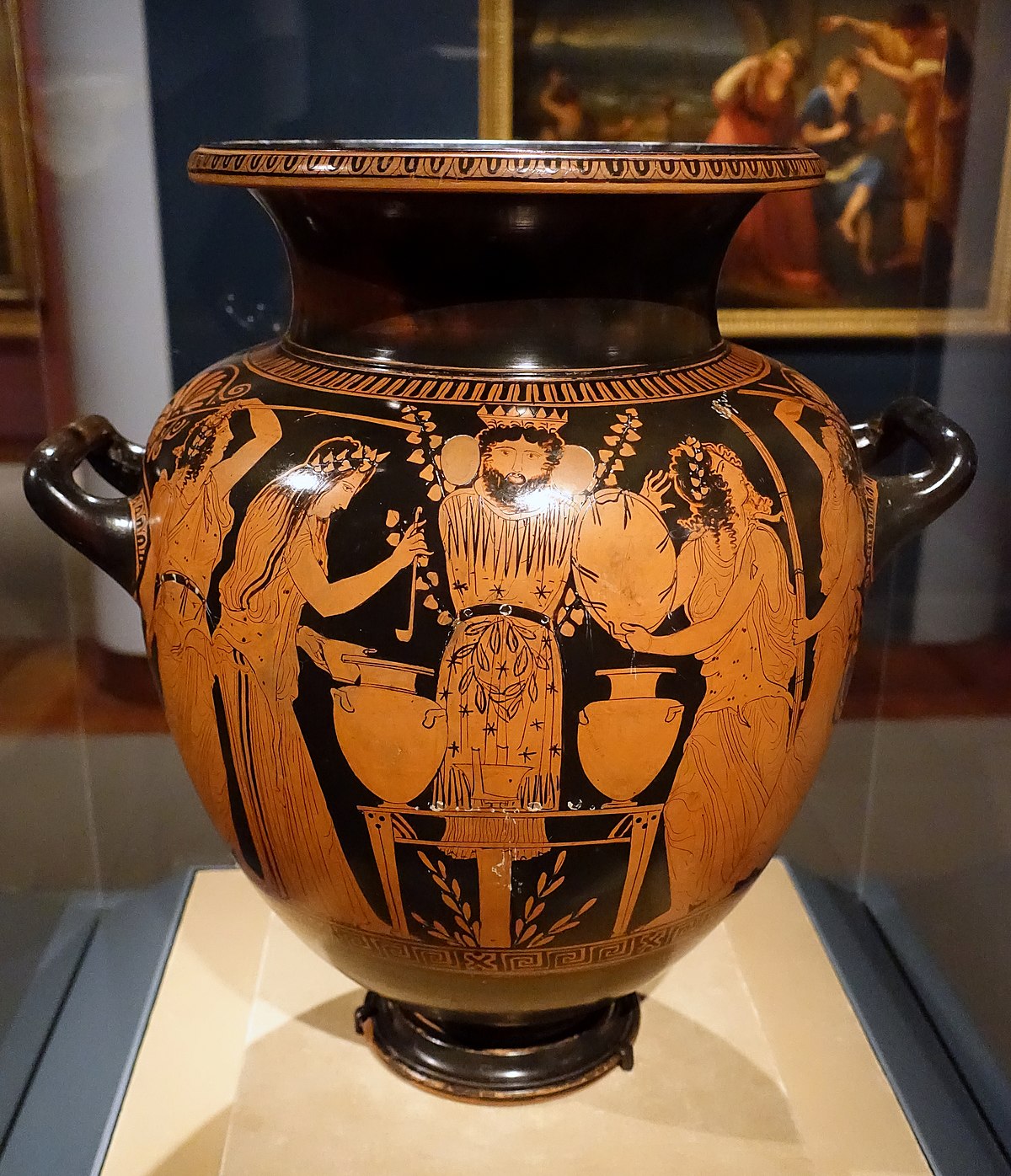
Who is shown on this pot?
Maenads dancing + statue of Dionysus
7
New cards
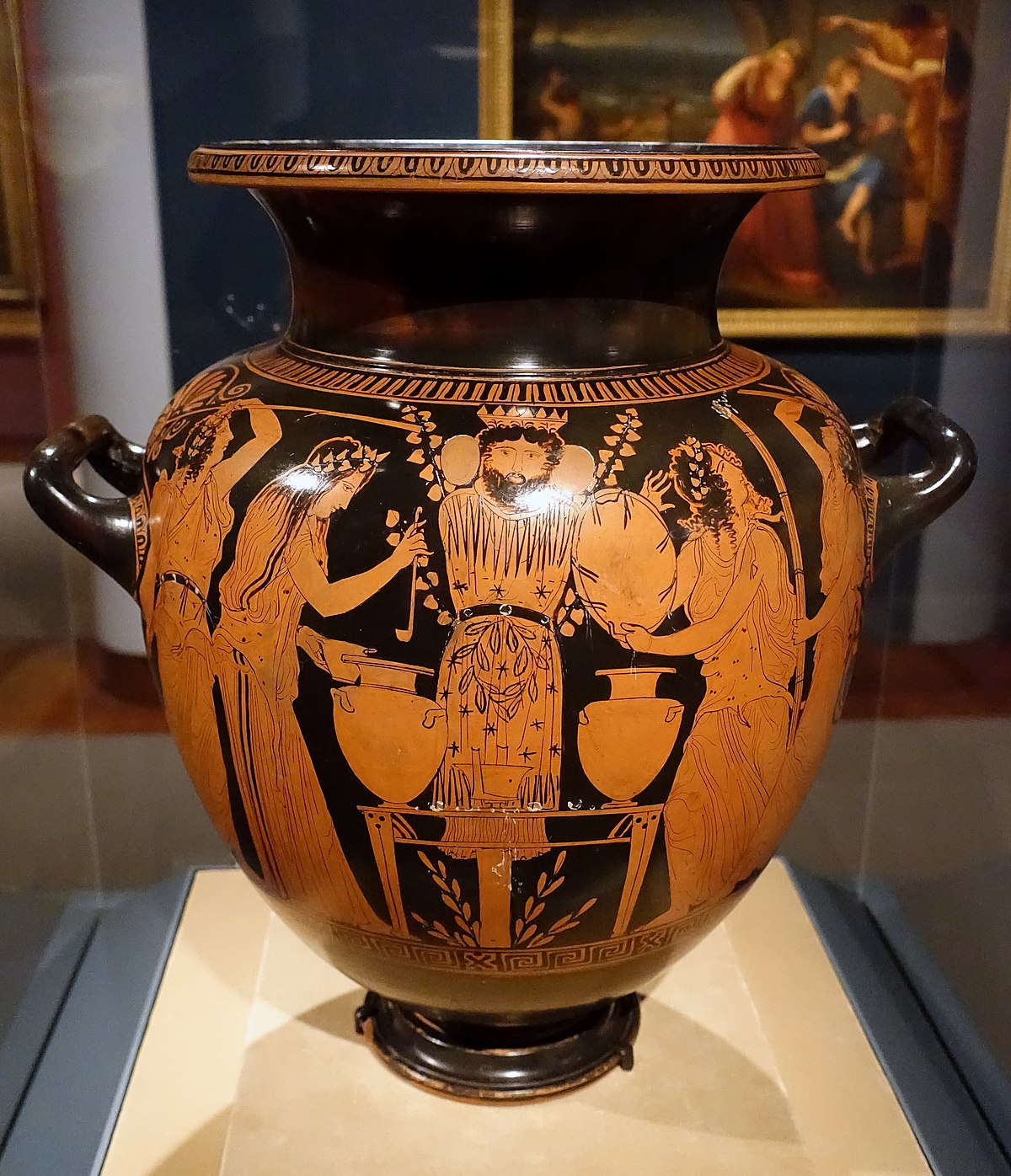
Where is this pot?
Naples
8
New cards
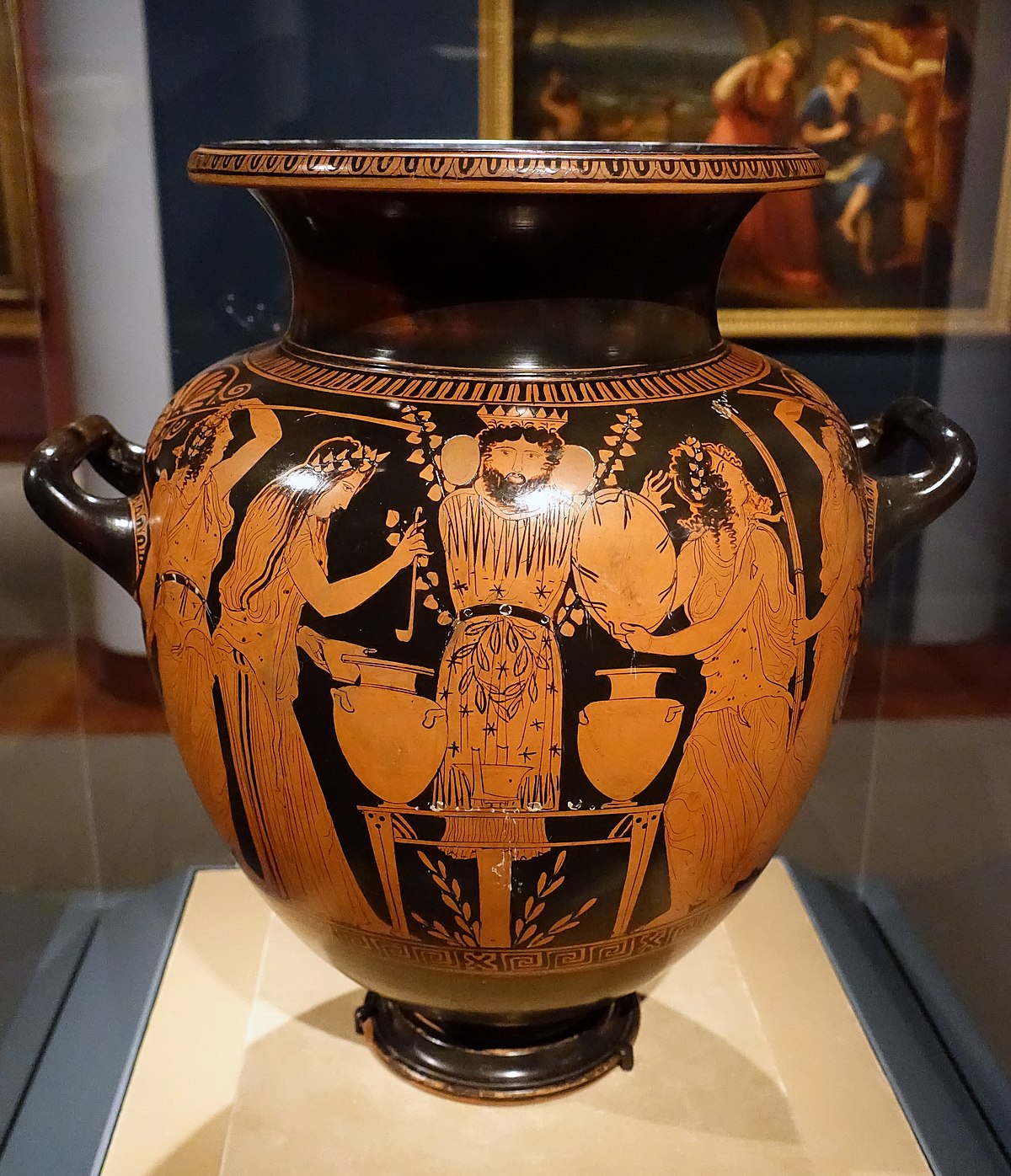
How useful is this pot in showing a Dionysiac ritual?
Useful:
* Dancing - common feature
* Ivy in Maenads’ hair + loose hair - shows they had lost themselves
* Wine being served
* Statue of Dionysus present
* Thyrsus
* Drum
* Dancing - common feature
* Ivy in Maenads’ hair + loose hair - shows they had lost themselves
* Wine being served
* Statue of Dionysus present
* Thyrsus
* Drum
9
New cards
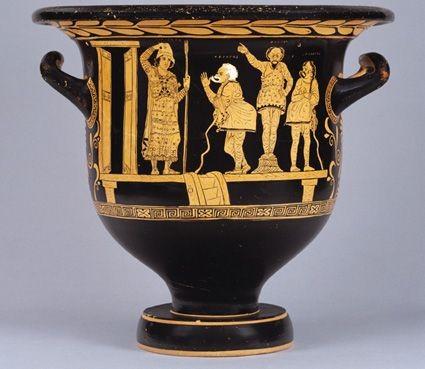
What is the date of this pot?
400-380 BCE
10
New cards
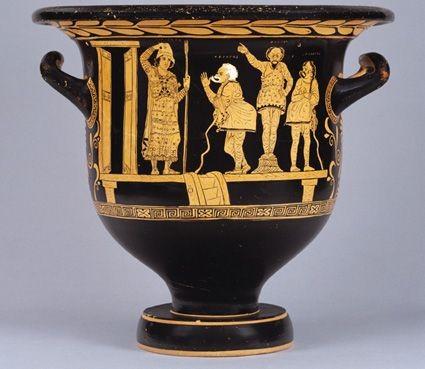
Who is shown in this pot
Aegisthus, Pyrrhics + choregos
11
New cards

How can we tell Aegisthus is a tragic actor?
* Long chiton
* Solemn expression
* Ornate clothing
* Kothornoi (boots)
* Solemn expression
* Ornate clothing
* Kothornoi (boots)
12
New cards
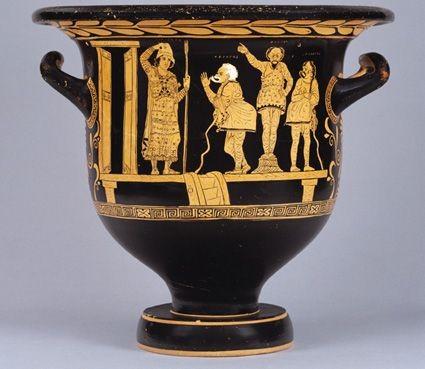
How can we tell that the other actors are comic actors?
* grotesque masks
* comedy phalluses
* short tunics
* mostly barefoot
* wrinkly skin suits
* receding hairlines
* comedy phalluses
* short tunics
* mostly barefoot
* wrinkly skin suits
* receding hairlines
13
New cards
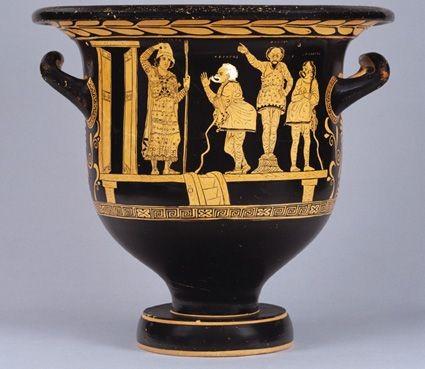
What stage features can be seen on this pot?
* Skene - the double doors are open
* Stairs to the orchestra
* Stage - the platform they’re standing on
* Stairs to the orchestra
* Stage - the platform they’re standing on
14
New cards
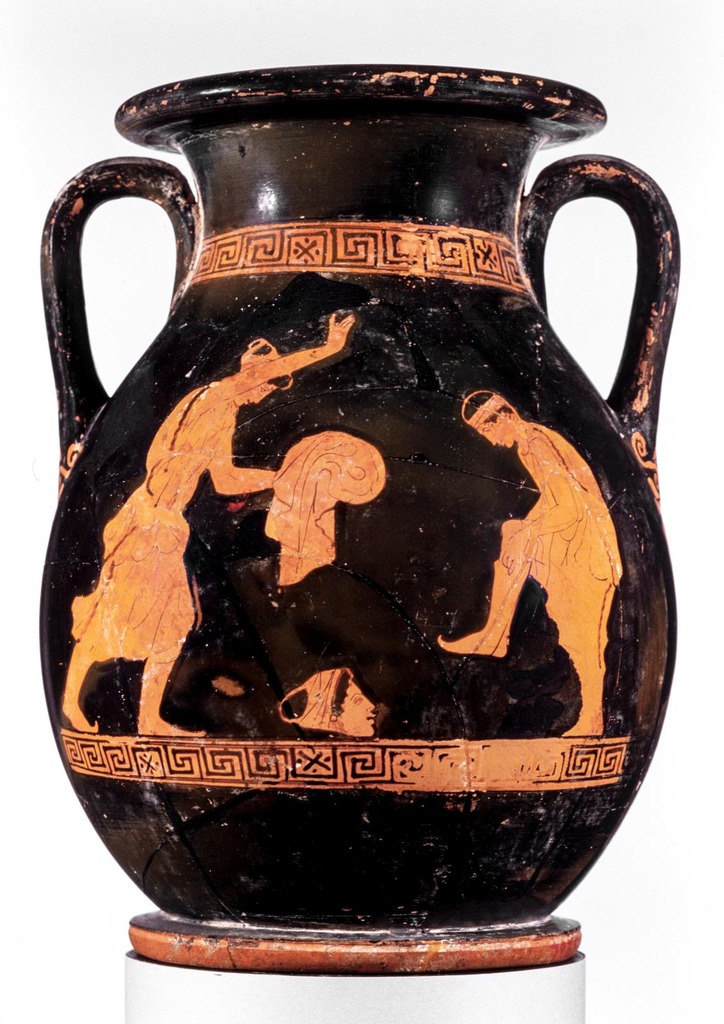
What is the date of this pot?
450 BCE
15
New cards
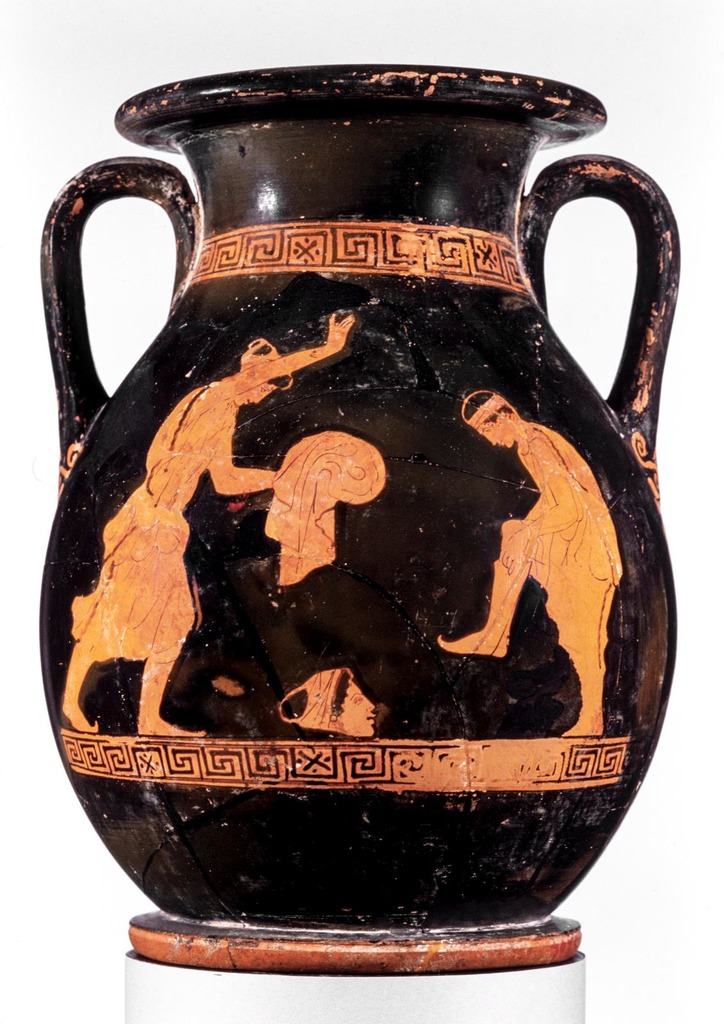
Key things shown in this vase?
* Kothornoi being put on
* One actor has his mask on, the other mask is on the floor
* They are dressing up like women - the hair on the masks is up like a married woman’s
* One actor has his mask on, the other mask is on the floor
* They are dressing up like women - the hair on the masks is up like a married woman’s
16
New cards
What are kothornoi?
thin + soft soled boots with the ends turned up to prevent tripping
17
New cards

What is the date of this pot?
410 BCE
18
New cards
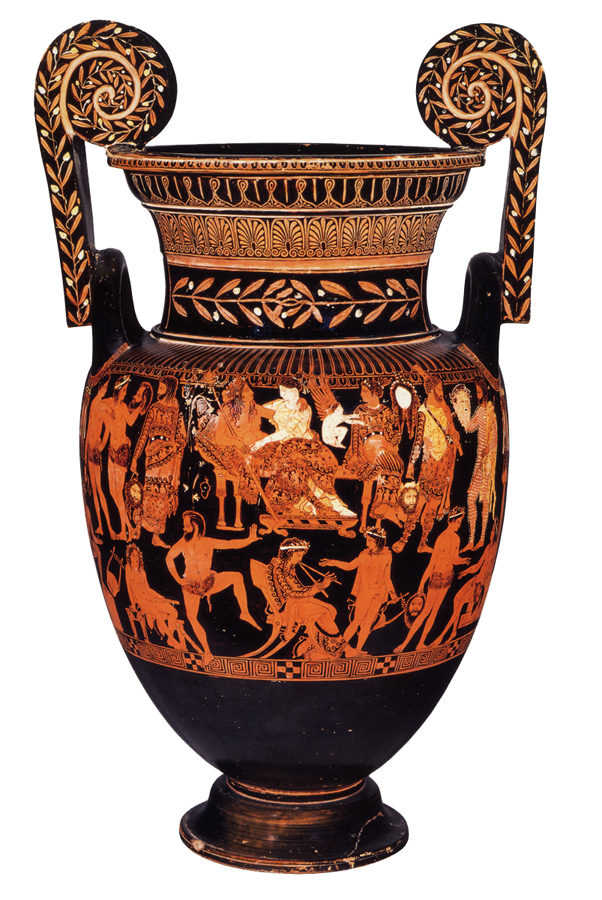
What does this pot depict?
a team of actors celebrating with costumes, masks, aulos player, playwright and Dionysus
19
New cards
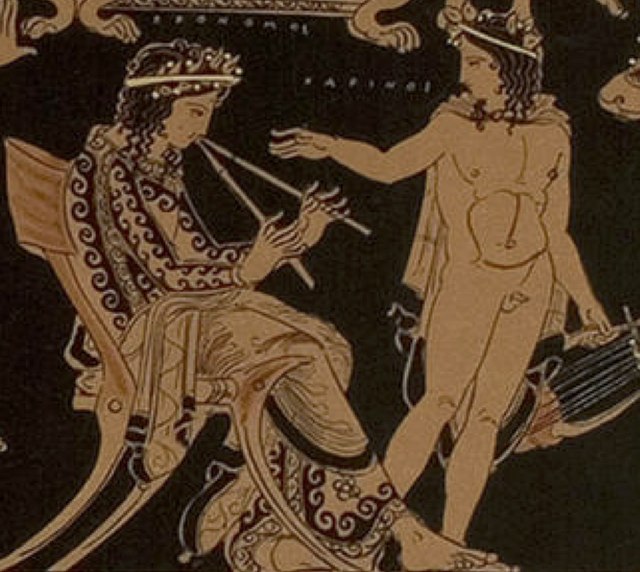
Who is shown here?
Promos Aulos - Aulos player
Born in Thebes
One of the most famous musicians of the late 5th century
Born in Thebes
One of the most famous musicians of the late 5th century
20
New cards
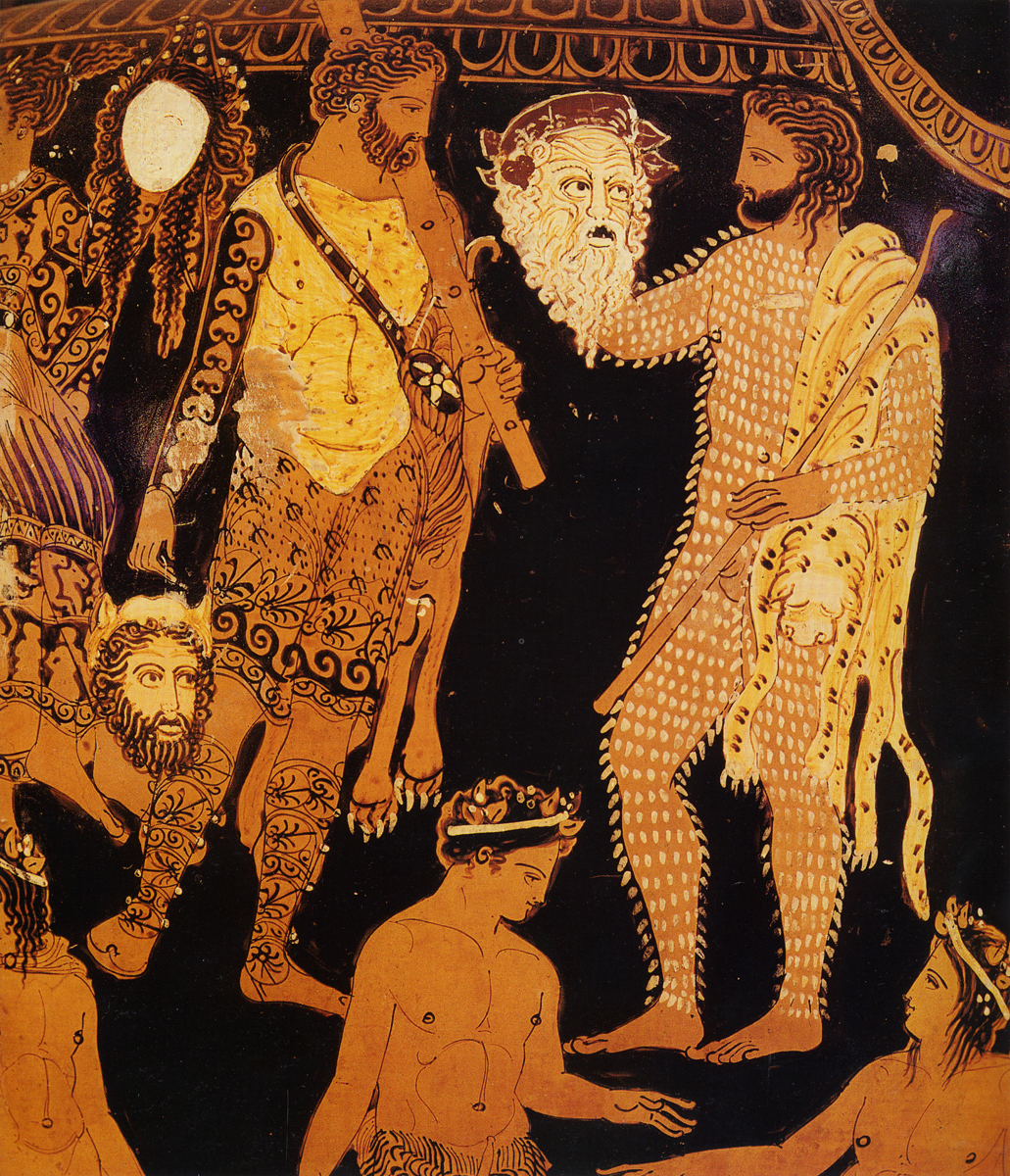
Who is shown here on the left?
Herakles - Club and lionskin
21
New cards
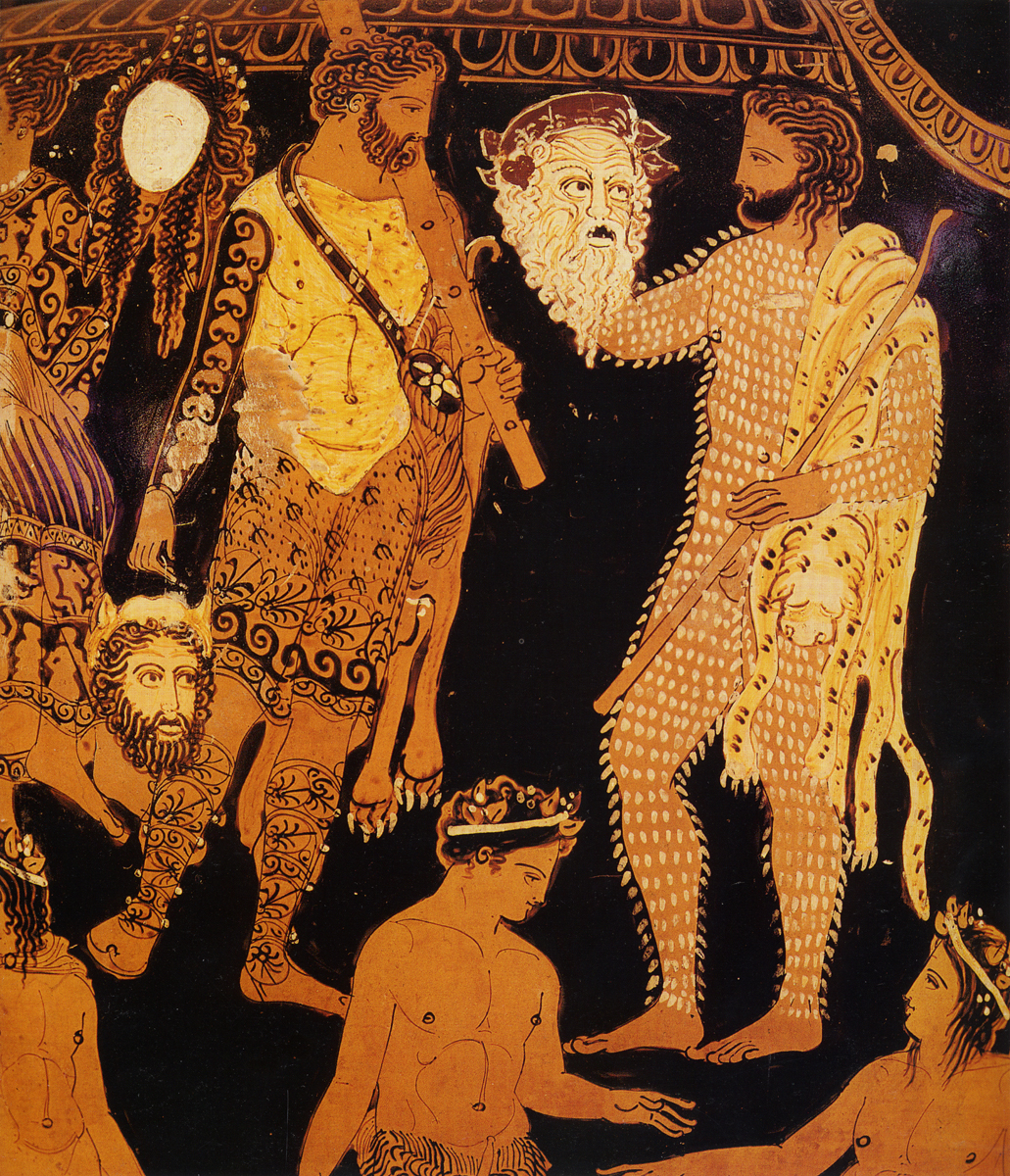
Who is shown here on the right?
Popposilenus
22
New cards
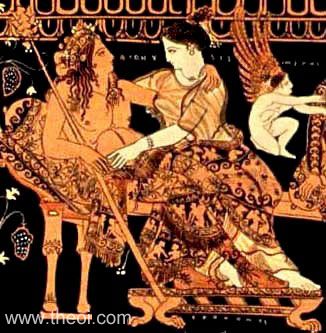
Who is shown here?
Dionysus, Ariadne and Himeros
23
New cards
Who is Himeros?
Greek god of uncontrollable desire
24
New cards

Who is the man with the scroll at the bottom of the vase?
Demetrios - playwright
25
New cards
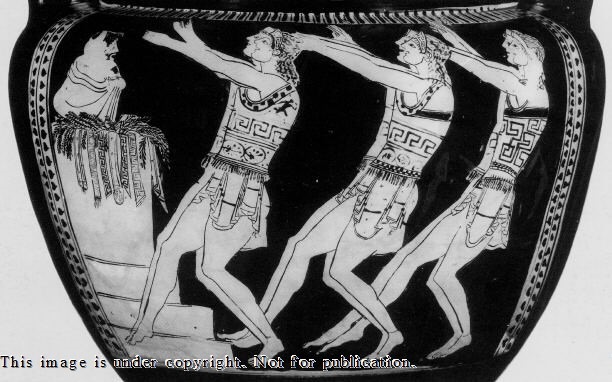
What is the date of this pot?
500-490 BCE
26
New cards
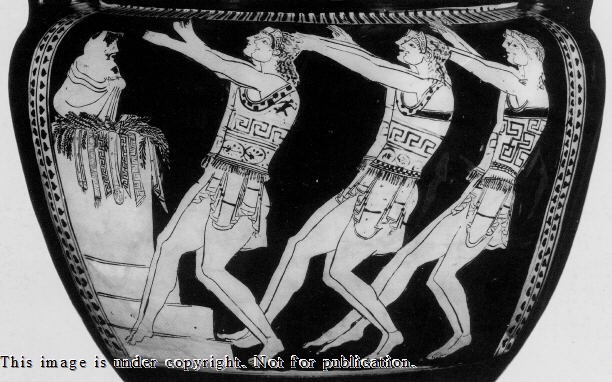
What shows that these men are the chorus?
* letters coming out of their mouths - shows singing
* All wearing masks - same hair + face shape + gaping mouths
* All wearing military costumes - no helmets because of masks
* All barefoot - chorus went barefoot not soldiers
* All wearing masks - same hair + face shape + gaping mouths
* All wearing military costumes - no helmets because of masks
* All barefoot - chorus went barefoot not soldiers
27
New cards
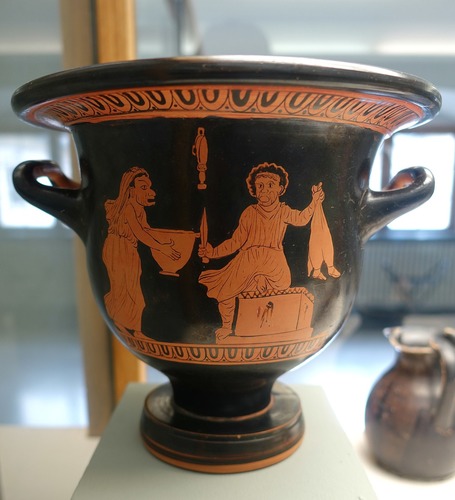
What is the date of this pot?
380-370 BCE
28
New cards

What play does this pot depict
Women at the Thesmophoria by Aristophanes
29
New cards
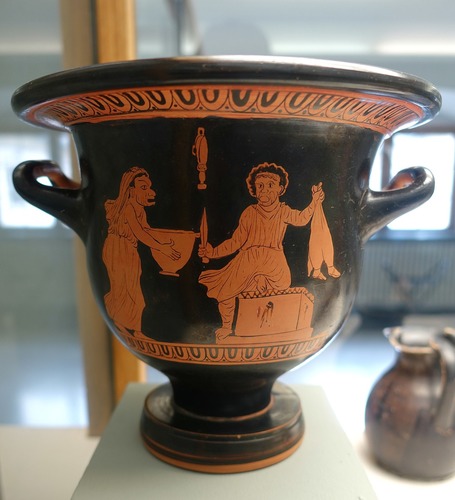
How useful is this pot in showing how a comedy by Artistophanes may have been staged?
Useful:
* Props are mentioned in the dialogue (wineskin baby)
* Actions of the actors mirror the text of the play
* Costumes of actors - element of dramatic performance
* Masks - female mask + male mask shaved to look like a woman
* Shows use of props - knife, wineskin, mirror + bowl
* Shows use of staging elements - man is sitting on an altar
Not Useful:
* Only shows two actors
* Doesn’t show skene or orchestra
* Props are mentioned in the dialogue (wineskin baby)
* Actions of the actors mirror the text of the play
* Costumes of actors - element of dramatic performance
* Masks - female mask + male mask shaved to look like a woman
* Shows use of props - knife, wineskin, mirror + bowl
* Shows use of staging elements - man is sitting on an altar
Not Useful:
* Only shows two actors
* Doesn’t show skene or orchestra
30
New cards
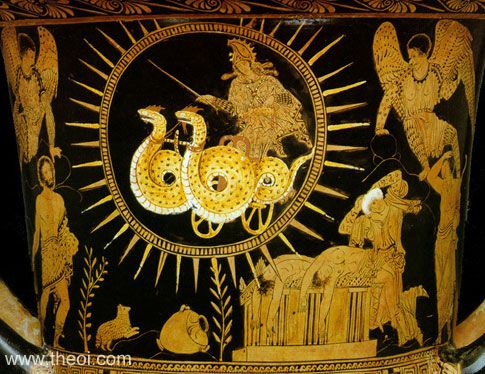
What is the date of this pot?
400 BCE
31
New cards
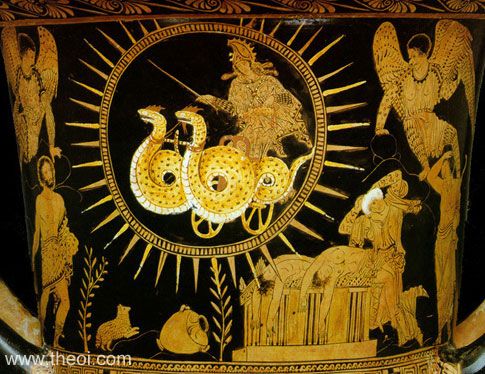
How is this vase different to Euripides’ play “Medea”?
* No furies or dragons mentioned in the play
* Sons are in the wrong place
* Sons are in the wrong place
32
New cards
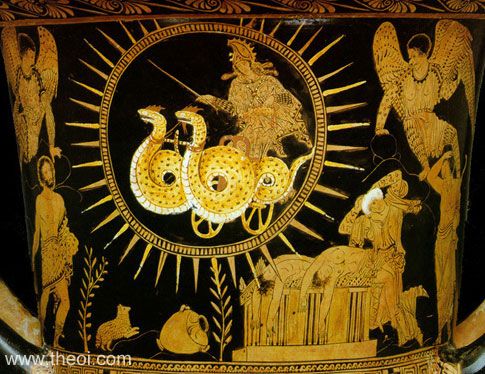
Who is depicted on this pot?
Medea, Jason, furies, tutor, nurse of boys, dead boys
33
New cards
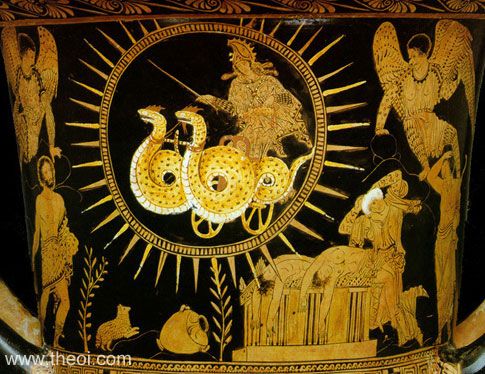
How useful is this pot as a source of information about the staging of greek tragedies?
Not useful:
* Doesn’t show mechanics of mechane or ekkyklema
* Doesn’t show skene or orchestra
* Jason in wrong costume - bare chested - not tragic costume
* Wrong number of actors on stage - 5 when there should be 3
Useful:
* Medea’s costume is ornate - accurate
* Doesn’t show mechanics of mechane or ekkyklema
* Doesn’t show skene or orchestra
* Jason in wrong costume - bare chested - not tragic costume
* Wrong number of actors on stage - 5 when there should be 3
Useful:
* Medea’s costume is ornate - accurate
34
New cards
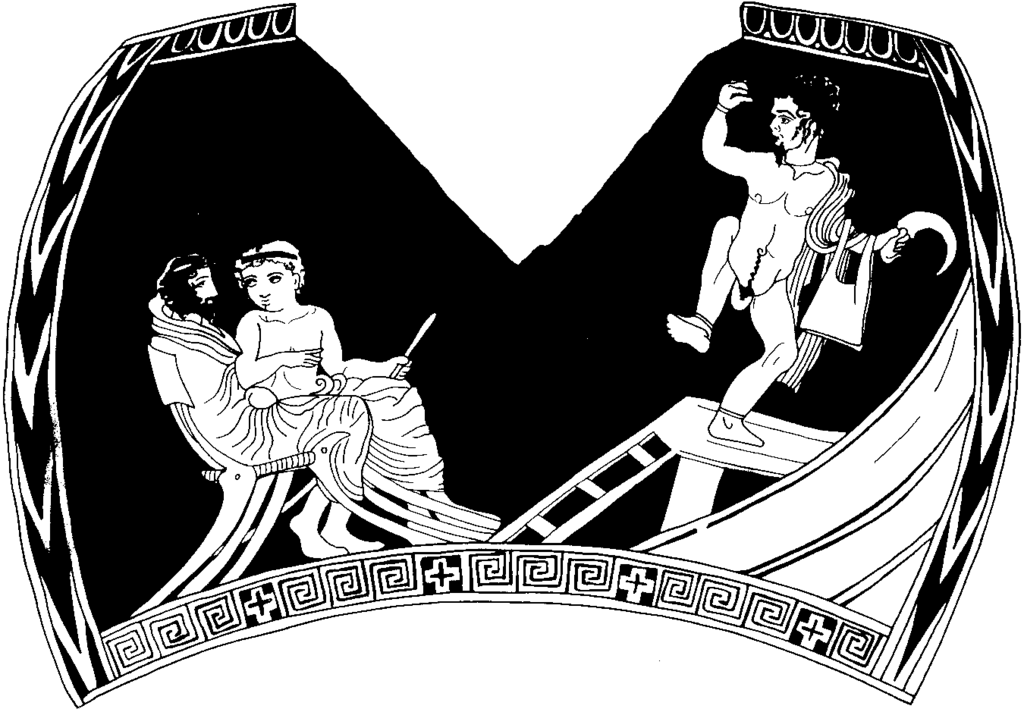
What is the date of this vase?
420-410 BCE
35
New cards
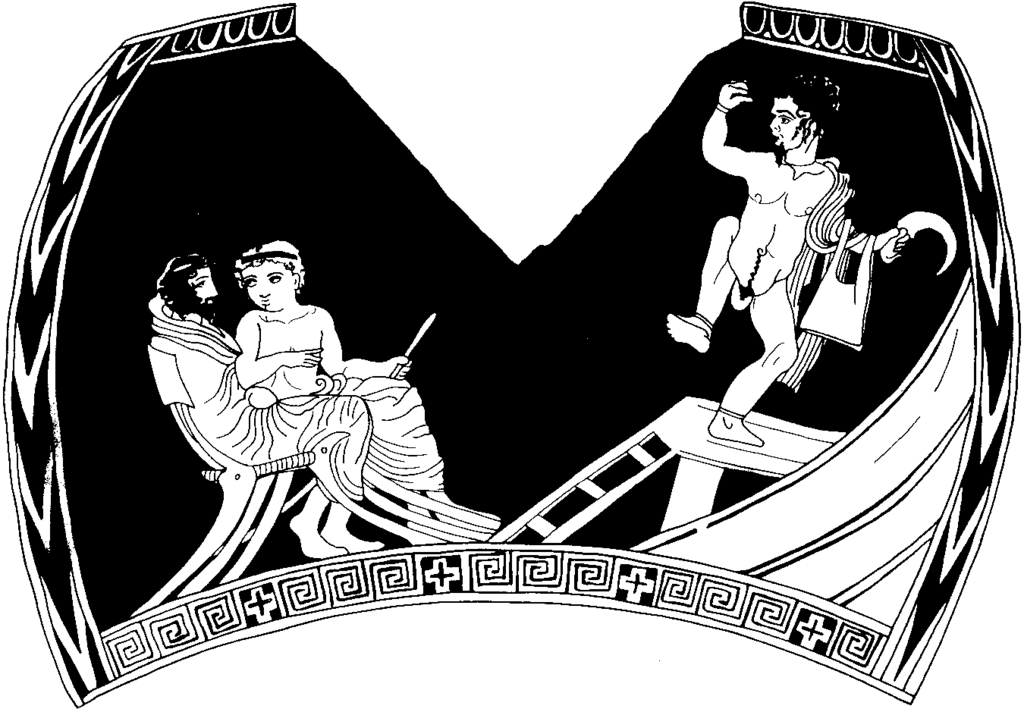
What is so special about this vase?
It is the only Attic vase to show a stage and the only ancient greek painting to portray a theatre audience
36
New cards
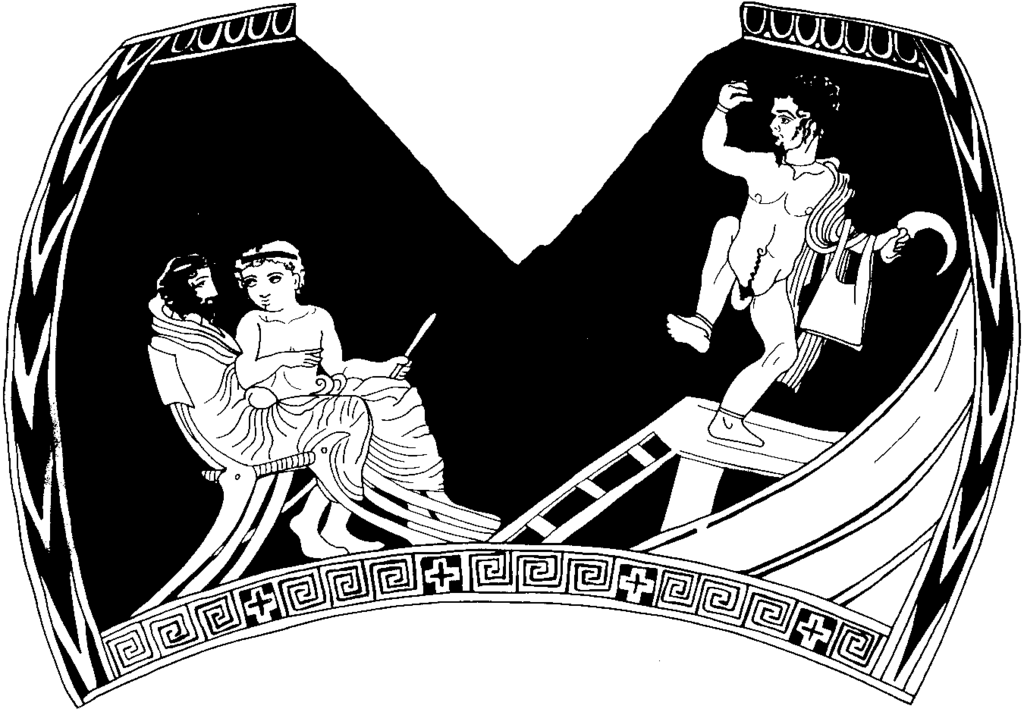
How can we tell this is a comedy?
The actor has a comedy phallus
37
New cards
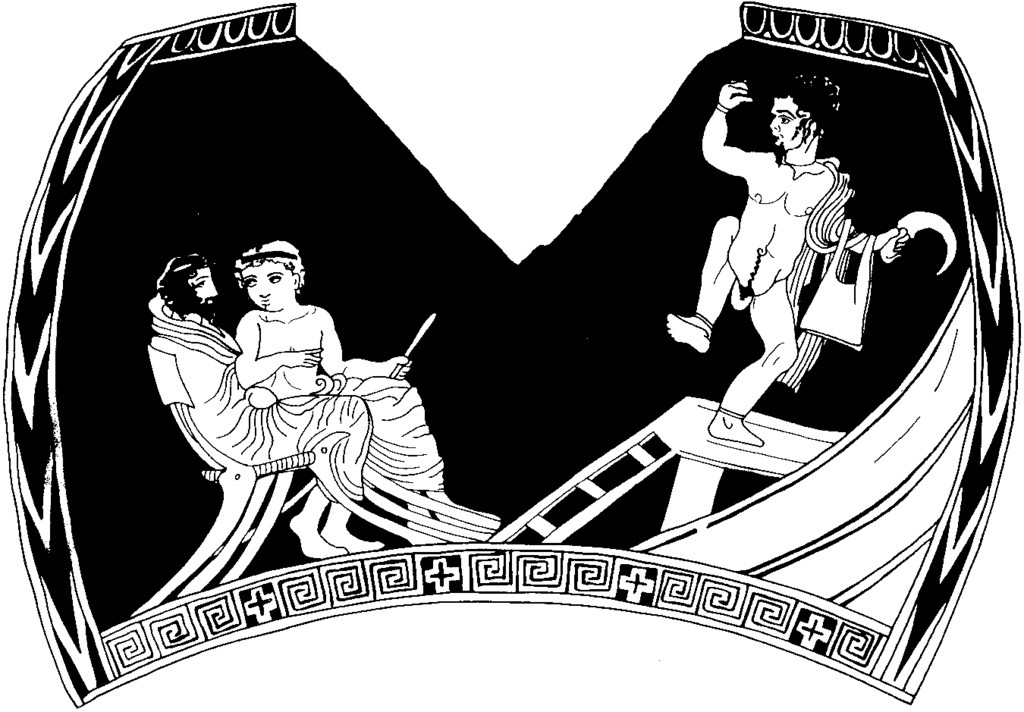
What are the chairs called?
Klismoi
38
New cards
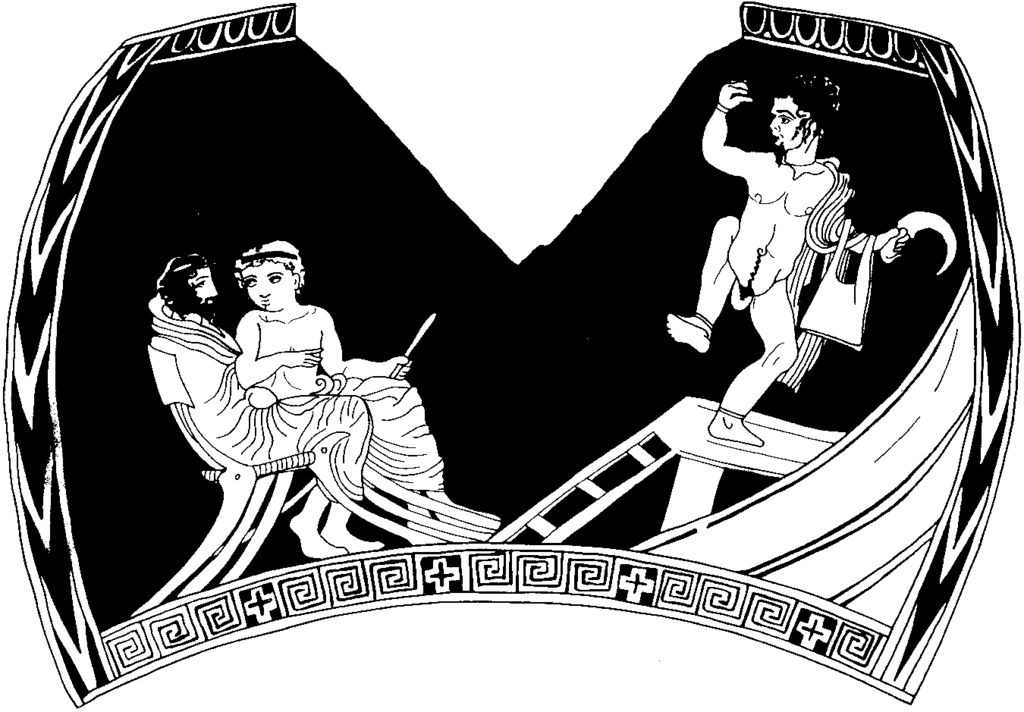
Who is the actor playing?
Perseus - sickle + bag for medusa
39
New cards
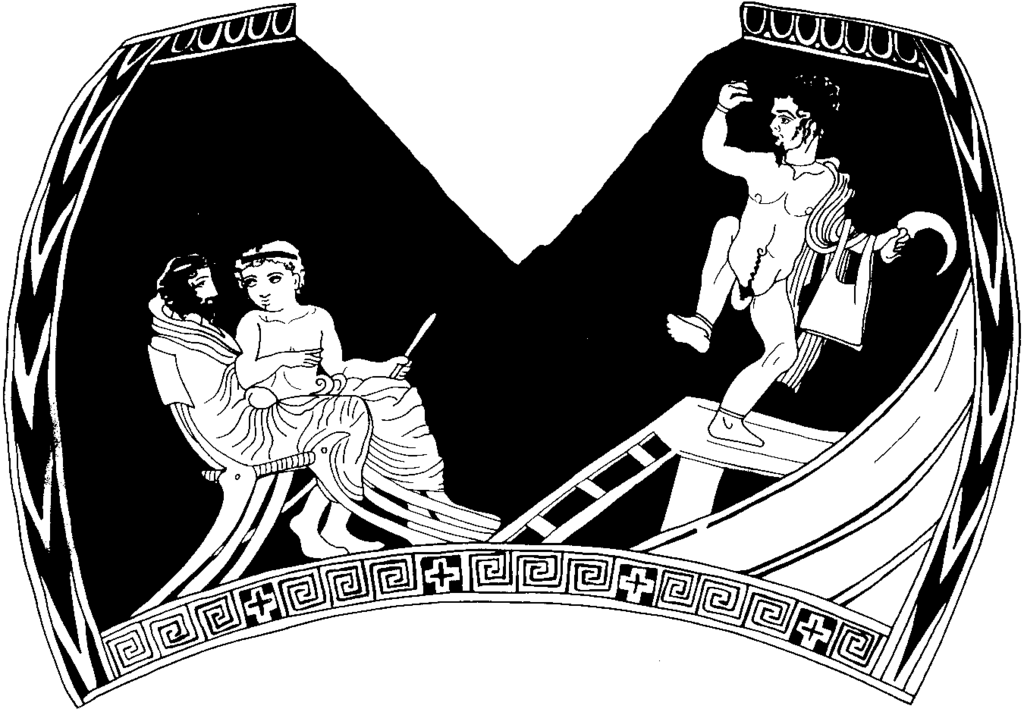
What is unusual about the stage layout?
No orchestra - could be artistic license
40
New cards
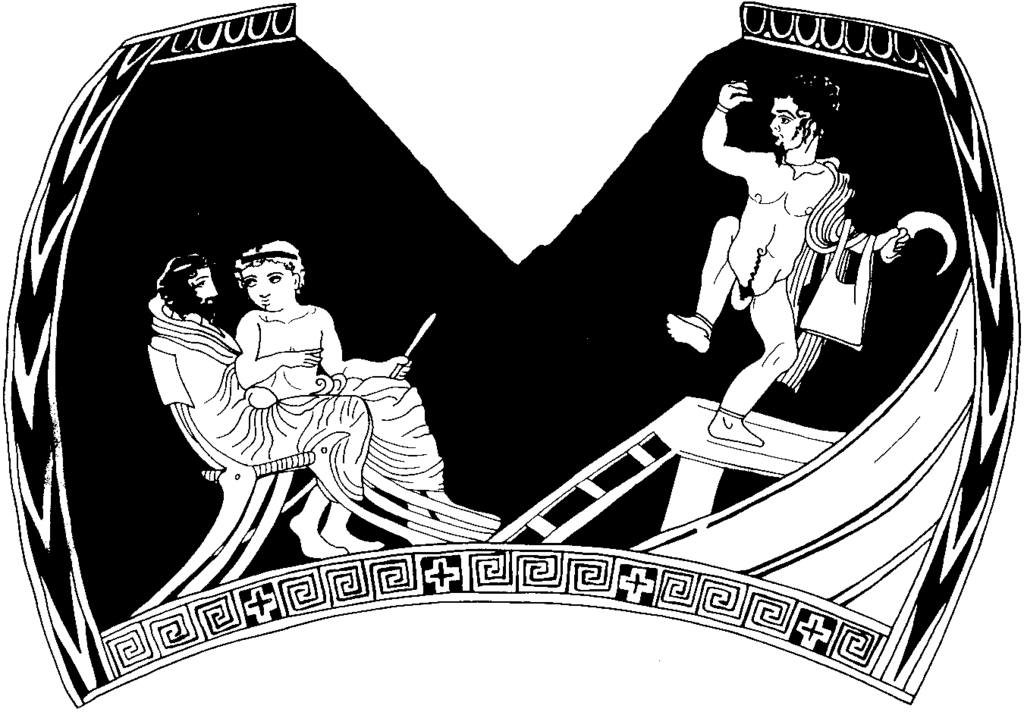
Who could the audience members be?
Judges, priests, audience, choregos or playwrights
41
New cards
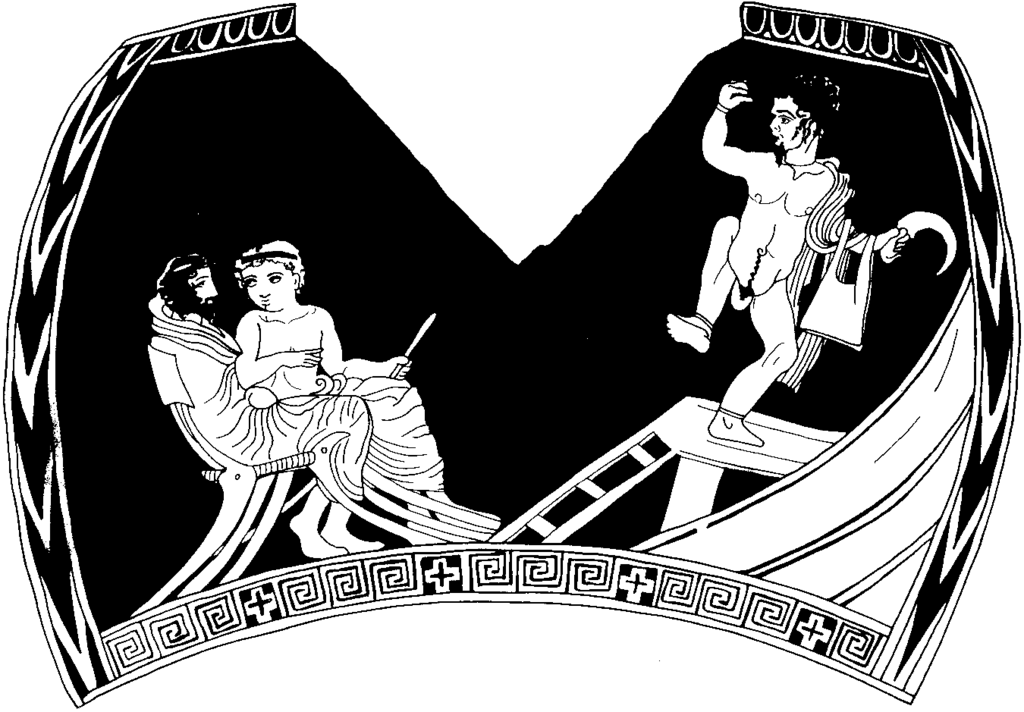
Is the actor actually naked?
No, he is stage naked - wearing a costume that makes him look naked